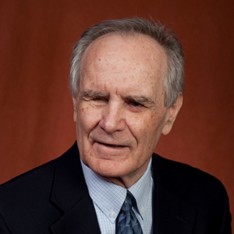The Economy after COVID-19

One thing is certain: life in America is not going to be the same after COVID-19. Like the Great Depression and World War II, the pandemic will exert an impact for years, perhaps even decades, on the nation’s economic and political fortunes.
Some of the changes cannot be predicted. However, we can anticipate some long-term effects. Here are six areas that will see major alterations.
1. The economy’s structure will change. The virus and lockdown crisis forced people to do things differently. Some people have discovered options that will cause them to make different choices in the future. For example, some businesses will use online meeting technology more intensely in the future, expanding work-at-home opportunities and potentially cutting back on travel to meetings. Some doctors and patients have discovered that online doctor visits work well compared to office visits. Some educational institutions and students may even find that online education works well and is more economical than in-person education. Some people have learned to cook and others discovered how to enhance their living spaces.
These changes will exert a positive impact on some sectors of the economy and an adverse impact on others.
2. Government debt will affect growth. The increases in federal expenditures and the reduction in government revenue are being financed almost exclusively by borrowing and will push the federal debt to $30 trillion sometime during 2021. This is 140 percent of GDP, a historically high figure, greater than even the level at the height of World War II. Currently, interest rates are low, which will reduce the cost of servicing this debt. But interest rates will inevitably rise at some point, and the additional interest cost will have to be covered by either higher taxes or money creation. The former will slow future economic growth, while the latter will be inflationary.
3. The Fed is likely to make monetary policy errors. Monetary policy exerts its impact on both output and the price level with a lag. The Fed may not even know when the crisis has ended; thus it will be difficult for the Fed to follow a policy consistent with price stability. The risk of policy error is great. The Fed may be too expansionary, leading to high rates of inflation. Or it may not be expansionary enough, and therefore the recovery will be weak. If either of these errors occur, economic instability and slower future growth will result.
4. Government regulations will be reassessed. If regulatory reforms facilitating telemedicine and provision of healthcare and other services across state boundaries and increasing the speed of developing life-saving drugs made sense during the COVID-19 crisis, why not make the reforms permanent? Removal of rules, regulations, licenses, and certifications that act as entry barriers, rather than protect public safety, could increase the flexibility of the U.S. economy and its resilience to future shocks from pandemics and other sources.
5. International trade and travel will be increasingly restricted. The United States and several other countries argue that China covered up the dangers of the COVID-19 virus and even encouraged international travel from China in January and February of 2020, thereby contributing to the worldwide spread of the virus. As a result, leading political figures argue for imposing trade restrictions on China to punish it for its irresponsible actions. The United States and other countries also imposed restraints on the export of health care equipment such as ventilators and respirators during the crisis.
These actions are likely to lead to more trade restrictions. Might they result in a trade war like the one generated by the 1930 Smoot-Hawley Tariff Act? If so, the nation’s (and the world’s) future output will be lower, and living standards will suffer. That is because modern living standards are the result of the specialization and interconnected exchanges that occur daily. And if politically managed trade replaces market exchange, both rent-seeking and political corruption will expand.
6. A ratchet effect is likely in government expenditures and intervention. Economic historian Robert Higgs observes that government intervention increases during a crisis, and virtually never falls back to the pre-crisis level. Expenditures during the crisis create interest groups that lobby for continued spending after the crisis is over. The government becomes more and more involved in the economy. Replacement of markets with political allocation leads to a less efficient allocation of resources and an increase in political corruption. Will the COVID-19 crisis follow this pattern?
With the passage of time, the impacts of the Great Suppression of 2020 will become more obvious. But these are areas to watch as we continue to live in interesting times.
This article is adapted from a chapter of a forthcoming book, Economics: Private and Public Choice, 17th edition, written by Gwartney, Richard Stroup, Russell Sobel, and David Macpherson (Boston: Cengage).










